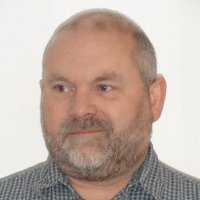Specialized iNANO Lecture: Benchtop NMR: Changing the NMR Paradigm Moving to Lower Fields, Treating NMR Only as a Detector, NMR for PAT, Online Process Control, and Real-time Reaction Monitoring
Dr. John C. Edwards, Ph.D., Manager, Process and Analytical NMR Services, Process NMR Associates, Connecticut, USA
Info about event
Time
Location
Meeting room 1590-213, iNANO House, Gustav Wieds Vej 14, 8000 Aarhus C.

Dr. John C. Edwards, Ph.D., Manager, Process and Analytical NMR Services, Process NMR Associates, Connecticut, USA
Benchtop NMR: Changing the NMR Paradigm Moving to Lower Fields, Treating NMR Only as a Detector, NMR for PAT, Online Process Control, and Real-time Reaction Monitoring
A new craze in NMR surrounds the appearance of a number of benchtop NMR systems based on small permanent magnet designs. Currently the market for these systems is the educational market particularly in organic chemistry labs. This current market focus is sadly due to the fact that low field NMR is not viewed as a portable, easy-to-operate instrument that can be utilized to produce interesting data on anything but small molecules. This perception is due to the fact that the instruments are being marketed predominantly to 'NMR jocks' who live in the world of large supercon systems with ever increasing sensitivity and resolution.
In a modern chemistry environment software tools such as chemometrics and global spectral deconvolution are available that can allow lower resolution systems operating at 42, 60, and 80 MHz to yield information that can make these instruments into valuable process analytical tools correlating NMR 1H spectral variability to chemical and physical properties of interest to the process engineer and QA/QC analytical chemists. The instruments also have low fringe fields which makes them readily depoloyable in an on-line environment and also makes them transportable so they can be taken to an at-line situation and utilized by users with minimal training.
Biography
John Edwards obtained his B.Sc. in Chemistry from the University of Durham in 1986, and a Ph.D. in Physical Chemistry centerd around solid-state NMR of heterogeneous catalysts. He worked for 7 years as the sole NMR expert at Texaco R&D in Beacon NY before outsourcing himself to form Process NMR Associates in Danbury CT in 1997. Since then he has run an analytical NMR service and supported the application development of a number of on-line NMR systems that saw 40 NMR¹s deployed on-line in chemical plants and refineries. He is currently a principal of SpinMetrix, a company specializing in the development of NMR application software that can be utilized to execute NMR analysis approaches (based on chemometrics, direct measurement calculations or database searches), as well as pursue the idea of data fusion which combines NMR and other analytical data to hopefuly produce a better solution. His goal is to remain a neutral NMR application development company providing consulting and applications that can implemented on any NMR platform or in combination with other spectroscopies and analyses. His lab currently hosts two 300 MHz Varian NMR for liquids, a 200 MHz Varian NMR for solids, Aspect 60 MHz NMR, Magritek 42.4 MHz NMR, Picospin-80 MHz NMR, and a range of 20 MHz TD-NMR systems and single-sided NMR.
__________
Host: Professor Thomas Vosegaard & postdoc Morten Kjærulff Sørensen, Department of Chemistry & iNANO, Aarhus University
